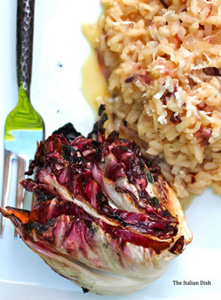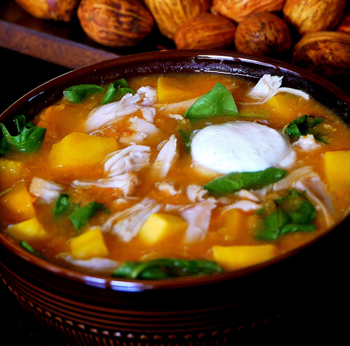 When Brian and I took the boys to Italy, we wanted to eat lunch at a place near the Vatican that a lot of these Italian travelers recommended. It was a lunch we never forgot. We still talk about it and laugh. The place is Dino and Tony's and it is run by two brothers – Dino out front and Tony in the kitchen, neither of whom speak English.
When Brian and I took the boys to Italy, we wanted to eat lunch at a place near the Vatican that a lot of these Italian travelers recommended. It was a lunch we never forgot. We still talk about it and laugh. The place is Dino and Tony's and it is run by two brothers – Dino out front and Tony in the kitchen, neither of whom speak English.
When we arrived for lunch, we were not offered menus at all. Dino told us he was going to bring out special antipasti for us and then asked if we like pasta. Well, sure, we said. Before we knew what was happening, he disappeared into the kitchen and then brought out two pizzas, a platter of prosciutto and salami, a platter of grilled vegetables, a platter of potato croquettes, fried olives stuffed with meat and a bottle of Chianti. This was just the antipasti!
Then he delivered large bowls of radicchio risotto. "Where is the pasta?" I asked him. "After the risotto," he said. I knew we were in trouble. The risotto was so good, I couldn't believe it. Then the pasta came - Rigatoni Amatraciana. Delicious and perfectly cooked.

 Pumpkin is one of my favorite ingredients, especially during the fall months. This is a great cake for friends with October/November birthdays (like me!)
Pumpkin is one of my favorite ingredients, especially during the fall months. This is a great cake for friends with October/November birthdays (like me!)  Salads don't always have to contain green lettuces, like basic iceberg or bibb, other colors, textures, and flavors can make an interesting combination. I love bitter lettuces, such as purple radicchio and white endive. Add pungent cheese, sweet and juicy pears, and crunchy walnuts to the mix, dress it in a Dijon-maple vinaigrette, and it becomes a festive fall salad that can be enjoyed as an elegant appetizer. Roasting the pears with a drizzle of maple syrup creates another level of flavor and intensifies their sweetness. I use Seckel pears, which are a small and quite firm variety of pear. They work extremely well when cooked and don't lose their texture at all, making them ideal in this salad.
Salads don't always have to contain green lettuces, like basic iceberg or bibb, other colors, textures, and flavors can make an interesting combination. I love bitter lettuces, such as purple radicchio and white endive. Add pungent cheese, sweet and juicy pears, and crunchy walnuts to the mix, dress it in a Dijon-maple vinaigrette, and it becomes a festive fall salad that can be enjoyed as an elegant appetizer. Roasting the pears with a drizzle of maple syrup creates another level of flavor and intensifies their sweetness. I use Seckel pears, which are a small and quite firm variety of pear. They work extremely well when cooked and don't lose their texture at all, making them ideal in this salad. Apple pie, apple crisp, apple turnovers, apple tart, apple sauce, apple cider—it's the season for apples. I can't think of a better way of enjoying it other than by baking with apples. Who doesn't love a classic apple pie this time of year?
Apple pie, apple crisp, apple turnovers, apple tart, apple sauce, apple cider—it's the season for apples. I can't think of a better way of enjoying it other than by baking with apples. Who doesn't love a classic apple pie this time of year? If I told you that I had a fabulous soup recipe with only three ingredients in it, would you believe me? Leeks, potatoes and water or chicken broth. Oh and a little butter to saute the leeks in, that's it.
If I told you that I had a fabulous soup recipe with only three ingredients in it, would you believe me? Leeks, potatoes and water or chicken broth. Oh and a little butter to saute the leeks in, that's it.
